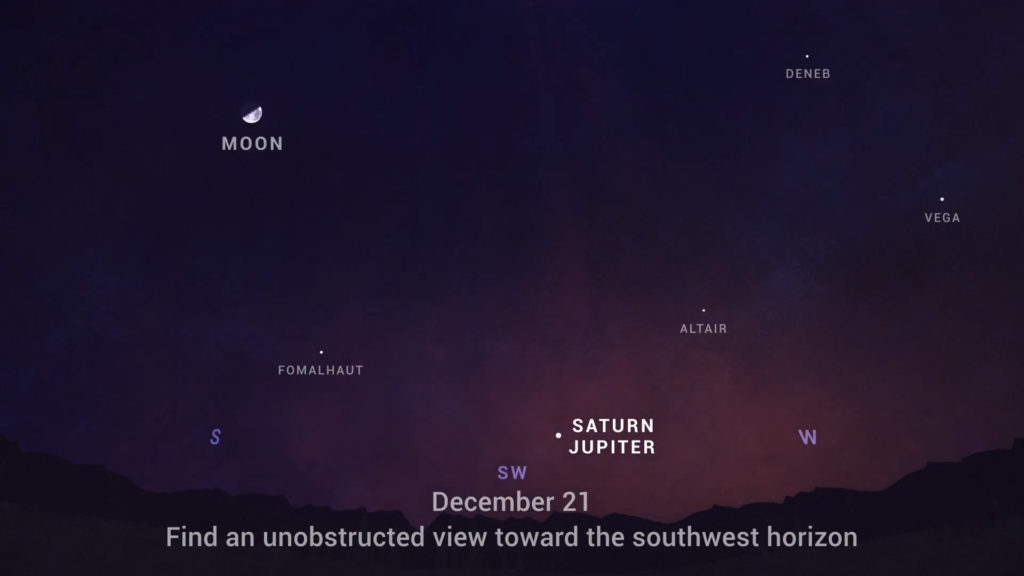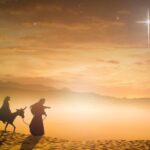‘Christmas Star’ will form as Jupiter and Saturn align this month

A spectacular celestial event is expected to appear after sunset on Dec. 21, the day of the 2020 Winter Solstice, according to NASA. Some are calling it a “Christmas Star.”
Jupiter and Saturn will become closer and closer until they officially align around the end of the month—coming about 0.1 degree away from each other, EarthSky reports. They won’t be that close physically, but will appear that way because of their orbital alignment.
How to find Jupiter and Saturn
To find the gas giants, you can start looking now in the southwestern sky just after sunset. Just be sure to find an unobstructed view. They’ll be located some 20 degrees above the horizon at 6 p.m. local time, according to Astronomy.com.
You don’t necessarily need binoculars or a telescope.
‘Great Conjunction’
In astronomy, the passing of two celestial objects as seen from Earth is considered a “great conjunction.” It will observable from anywhere on Earth, provided the sky is clear.
The planets’ “close encounter” is incredibly rare, as the last time they lit up the night sky as one light was hundreds of years ago, astronomers say. The two are not projected to appear this close again until 2080.
Some experts theorize that the Star of Bethlehem in the Bible may have involved a triple conjunction of Jupiter Saturn and Venus, al.com reports.
Wait, there’s more
On top of the Winter Solstice and a celestial meetup, December also brings one of the most reliable annual meteor showers: the Geminds. The shower is active until Dec. 17. The shower will put on quite a spectacular show this year as the shower’s peak (Dec. 13-14) coincides with a nearly new moon.
The best way to see them is to lie flat on the ground with your feet pointing south and look up.
It’s all a precious reminder of our place in the universe and how connected we can feel—even in the midst of a pandemic—just by looking up.



